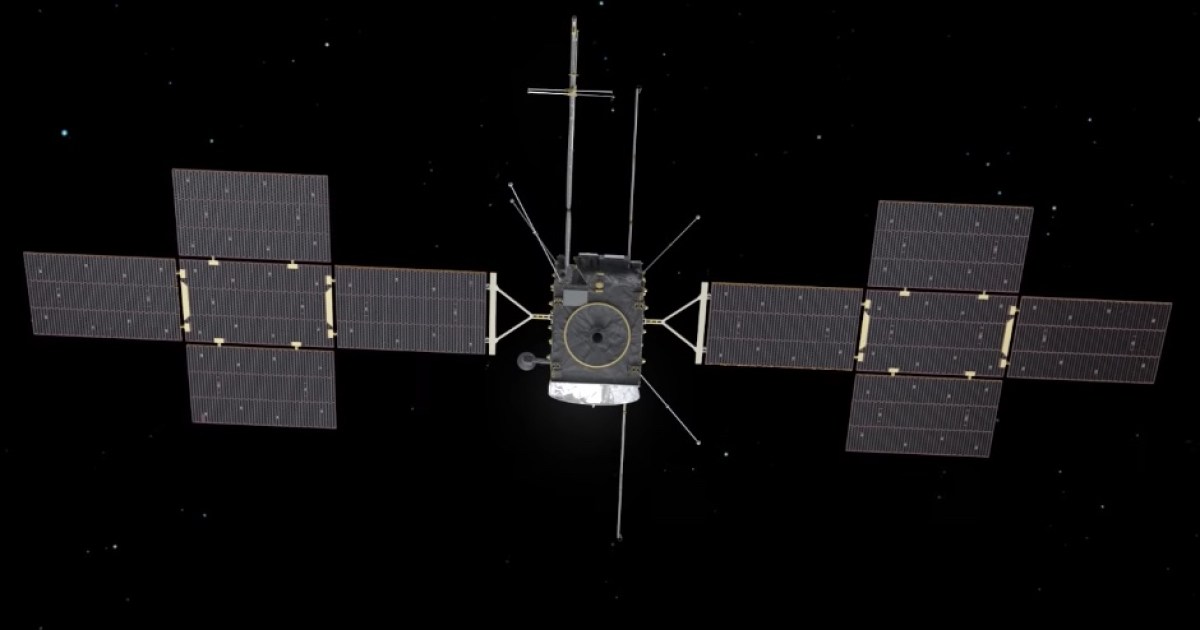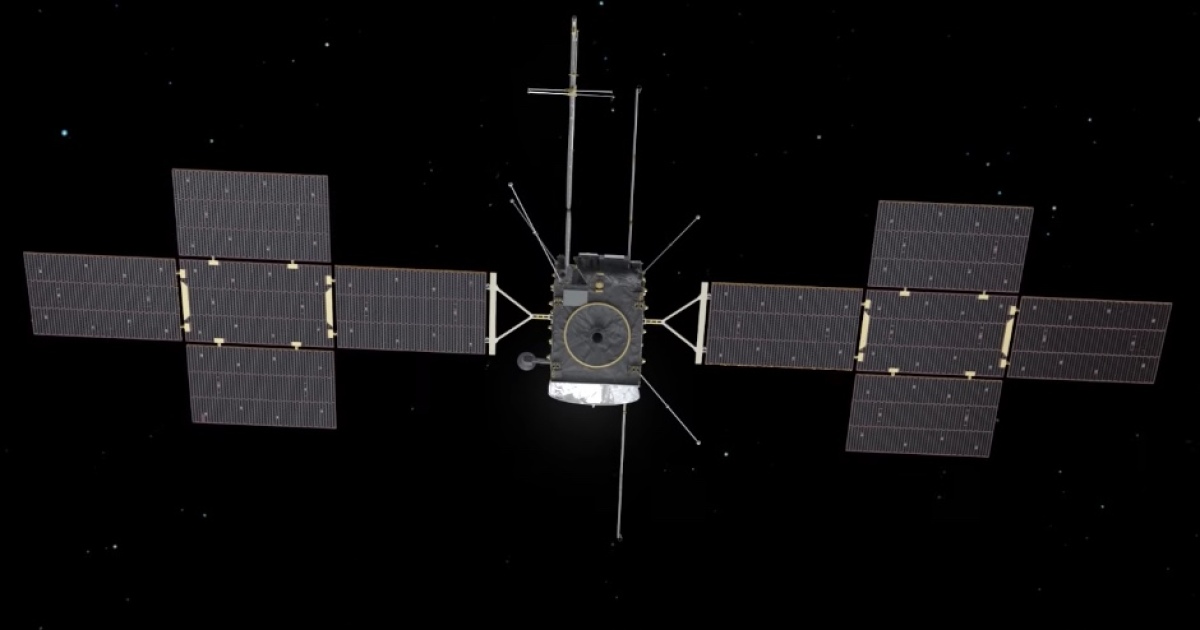
The European Space Agency (ESA) is making final preparations for the launch of a new spacecraft that will explore the icy moons of Jupiter. And you can watch the start of its epic voyage online.
Traveling aboard an Ariane 5 rocket, JUICE (JUpiter ICy Moons Explorer) will lift off from Europe’s Spaceport in Kourou, French Guiana, on Thursday, April 13.
The goal of the Juice mission is to make detailed observations of gas giant Jupiter and its three large ocean-bearing moons: Ganymede, Callisto, and Europa. To do this, JUICE will use what ESA says are the “most powerful science instruments ever sent to the outer solar system.”
The explorer is set for an eight-year cruise that will include flybys of Earth and Venus that will slingshot it to Jupiter. Later, it will make 35 flybys of the three large moons while orbiting Jupiter, and then switch to orbit Ganymede.
The spacecraft will experience multiple challenges that include radiation, extreme temperatures, and the strong gravitational pull of Jupiter, but the team behind the mission is as confident as it can be that everything will be OK.
“This ambitious mission will characterize these moons with a powerful suite of remote sensing, geophysical, and in situ instruments to discover more about these compelling destinations as potential habitats for past or present life,” ESA said on its website. “Juice will monitor Jupiter’s complex magnetic, radiation, and plasma environment in depth and its interplay with the moons, studying the Jupiter system as an archetype for gas giant systems across the universe.”
You can learn more about the mission in the video below:
How to watch
ESA will live stream the launch and early stages of the mission when JUICE lifts off from the Spaceport facility on Thursday, April 13.
The live stream will begin at 7:45 a.m. ET (4:45 a.m. PT), with the launch scheduled for half an hour later at 8:15 a.m. ET (5:15 a.m.)
The separation of Juice from the Ariane 5 upper stage is set to take place at 8:42 a.m. ET, with the deployment of the spacecraft’s solar array expected to finish at 9:55 a.m. ET.
You can watch the coverage by visiting ESA’s YouTube channel.
Editors’ Recommendations
Services Marketplace – Listings, Bookings & Reviews
